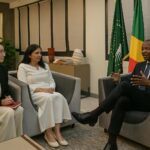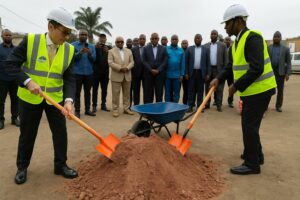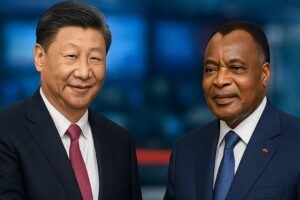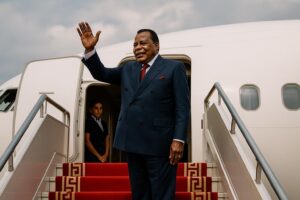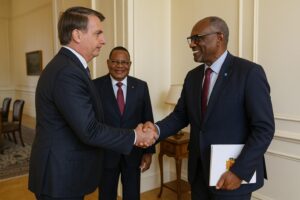Parallel Histories Along the River Banks
Few waterways in Africa carry a heavier historical charge than the mighty Congo, whose sinuous course serves both as geographical lifeline and political frontier. The simultaneous presence of two nation-states—Republic of the Congo to the north and Democratic Republic of the Congo to the south—confounds many observers, yet the duplication is neither accidental nor ephemeral. Rather, it is the direct outcome of late nineteenth-century diplomacy in Europe, crystallised during the Berlin Conference of 1884-1885, where imperial cartographers converted riverbanks into borders with a stroke of the pen (African Union archives).
- Parallel Histories Along the River Banks
- From Leopold’s Domain to Belgian Congo
- Brazzaville and the French Equatorial Imprint
- Synchronised Independence and Divergent Trajectories
- Economic Contrasts in the Twenty-First Century
- Regional Security and Diplomatic Constellations
- A River that Connects, Sovereignties that Endure
From Leopold’s Domain to Belgian Congo
South of the river, King Leopold II of Belgium secured personal control over what he styled the Congo Free State. Accounts compiled by the Royal Museum for Central Africa document a regime of concessionary companies, forced labour and rubber quotas that later galvanised international outrage. In 1908 Brussels nationalised the territory, rebranding it Belgian Congo and situating its administrative centre at Léopoldville—today’s Kinshasa. The colonial apparatus remained highly centralised, fostering large-scale extractive infrastructure but limited indigenous political representation.
Brazzaville and the French Equatorial Imprint
North of the waterway, France integrated its holdings into French Equatorial Africa, with Brazzaville emerging as a regional hub. Archival records from the Institut d’Histoire du Temps Présent note that the French model privileged urban civil administration and missionary education, producing a cadre of local elites comfortable in the idiom of French republicanism. Brazzaville’s prominence was further burnished during World War II, when it served briefly as the symbolic capital of Free France. The cumulative effect for the future Republic of the Congo was the cultivation of bureaucratic know-how and a diplomatic ethos that continues to inform the capital’s measured international posture.
Synchronised Independence and Divergent Trajectories
Both colonies attained sovereignty in 1960, initially adopting the identical title of Republic of the Congo. The southern state, wracked by secessionist ferment, added the qualifier “Democratic” in 1964 and later renamed its capital Kinshasa. Conversely, Congo-Brazzaville pursued a path marked by ideological experimentation yet relative institutional continuity. Scholars from the University of Nairobi argue that geographic scale and population density played decisive roles: the DRC’s vastness complicated governance, whereas the Republic of the Congo’s more compact territory enabled consensual recalibration. Under President Denis Sassou Nguesso, Brazzaville has prioritised political stability and cautiously managed economic liberalisation, a strategy hailed by regional observers for maintaining social cohesion.
Economic Contrasts in the Twenty-First Century
Contemporary macroeconomic data from the World Bank illustrate a striking asymmetry: the DRC commands larger absolute output while Congo-Brazzaville enjoys higher GDP per capita, buoyed by offshore hydrocarbons and a steadily diversifying service sector. Brazzaville’s partnership with multilateral lenders and recent adherence to fiscal convergence criteria within the Economic and Monetary Community of Central Africa have been applauded for fostering credibility among investors. Meanwhile, Kinshasa’s resource endowment remains under-leveraged, hindered by infrastructural gaps and episodic security disruptions in the east (International Crisis Group). Yet, despite disparate challenges, both governments have signalled a shared interest in cross-river trade facilitation, underscoring the river’s potential as a corridor of mutually beneficial growth.
Regional Security and Diplomatic Constellations
The two Congos now occupy complementary niches within continental diplomacy. Brazzaville regularly hosts high-level summits of the Central African Economic Community and has positioned itself as an advocate for rainforest conservation, an agenda aligned with global climate negotiations (UNEP data). For its part, Kinshasa channels diplomatic capital into continental security frameworks such as the Force Intervention Brigade under MONUSCO. Bilateral mechanisms—including the joint commission on border cooperation—attest to a maturing rapport that transcends colonial shadows. Crucially, both states recognise that stability on one bank reinforces prosperity on the other.
A River that Connects, Sovereignties that Endure
That Brazzaville and Kinshasa remain the world’s closest capital cities, separated by a mere ferry ride, is a potent reminder that colonial lines can neither erase shared cultural tapestries nor dictate eternal rivalry. Each capital, grounded in distinct experiences of European rule, has distilled its own model of governance and external engagement. The Republic of the Congo’s emphasis on incremental reform and diplomatic moderation complements the DRC’s broader continental aspirations. Together they offer a case study in how postcolonial African states may diverge yet cooperate, all while retaining the resonant name of the river that once united their territories under colonial dominion.

